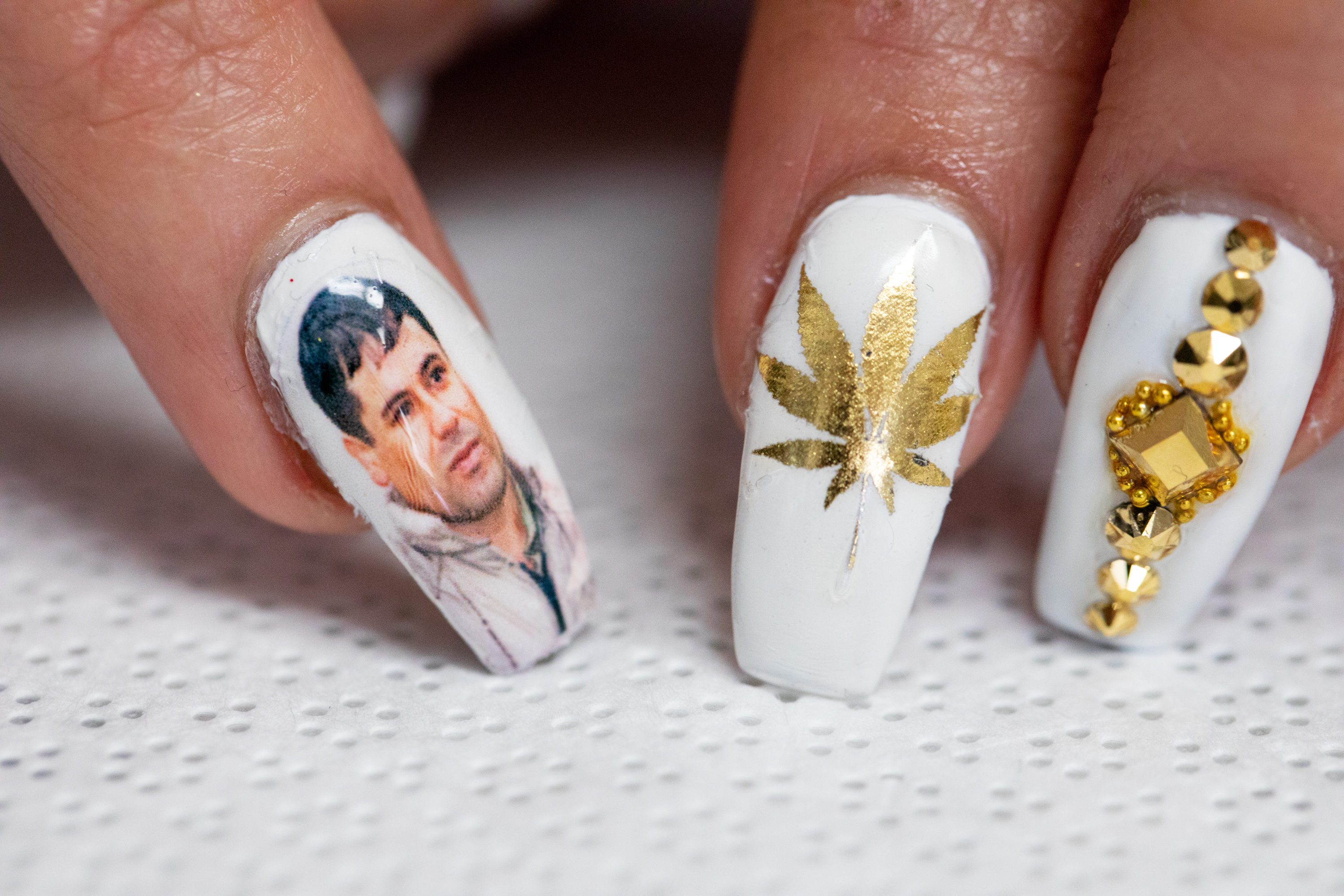A reporter heads to South Gate to transform her unvarnished nails with a flashy El Chapo-image studded manicure; her dad — a former LAPD narcotics officer — takes notice.
After three months of testimony which detailed astonishing accounts of drug smuggling, murder and bribery, Joaquín “El Chapo” Guzmán was found guilty on all 10 counts against him in a New York federal court. Guzmán, the former leader of the Sinaloa cartel, faces a mandatory life sentence for his crimes, but the notorious drug kingpin lives freely — on fingernails.
Three thousand miles away from the Brooklyn trial of the world’s most infamous narco, Ofelia Almeraz sits behind a glass table applying a thick layer of top coat over an image of El Chapo on an acrylic nail for one of her longtime customers. Almeraz, who goes by the name Alexia, is the owner of Alexia’s Nails and Spa, a South Gate salon that has become popular for nail art that pays homage to the imprisoned cartel leader.
Like Guzmán, Almeraz comes from Sinaloa, Mexico — a state that hugs the Gulf of California coast in northwest Mexico and home to what authorities call “the most powerful drug trafficking organization in the world.”
Almeraz says she first got the idea to do Chapo Nails in 2015 after Guzmán escaped one of Mexico’s
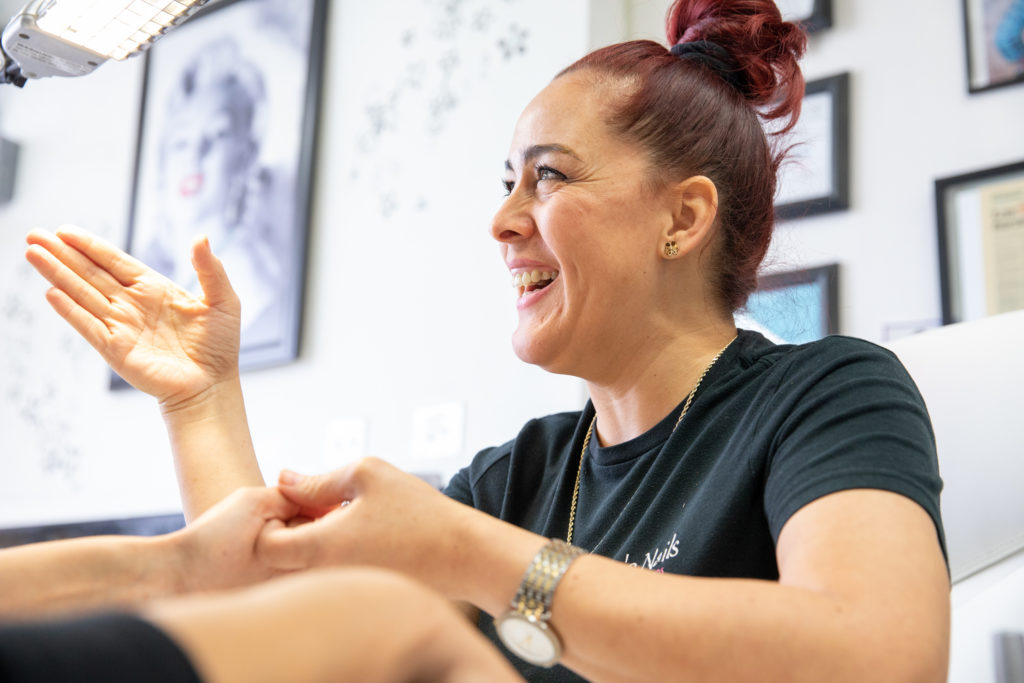
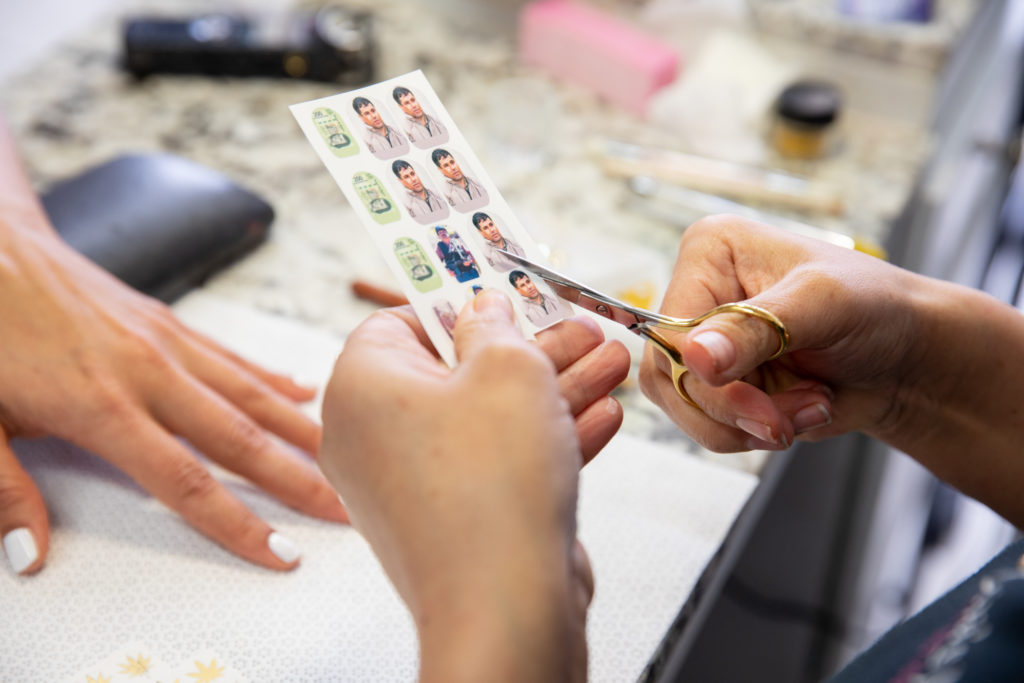
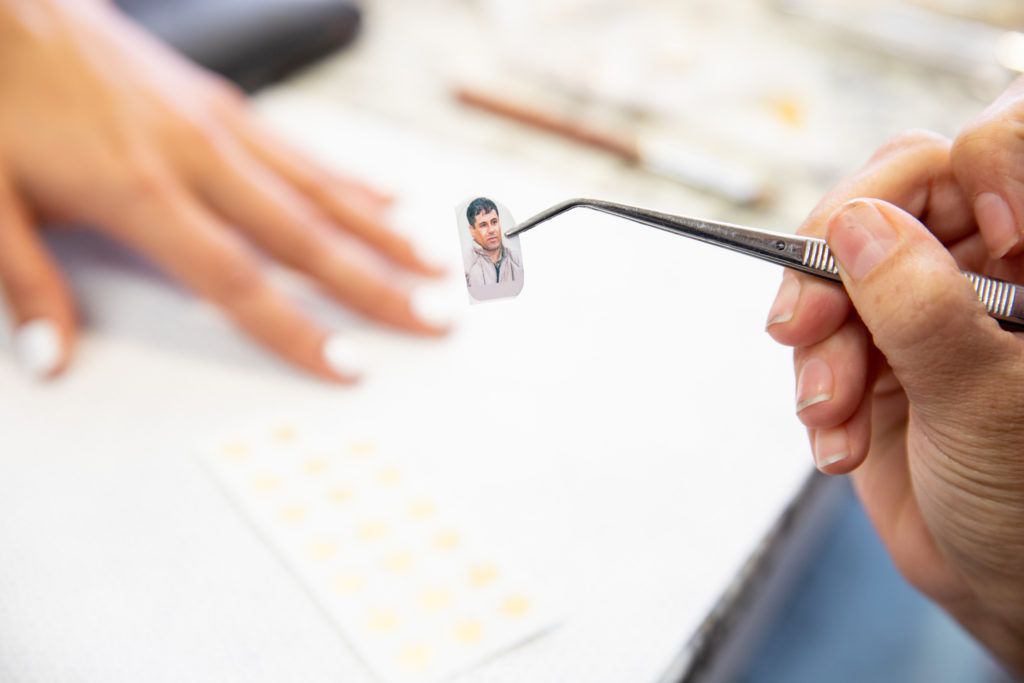
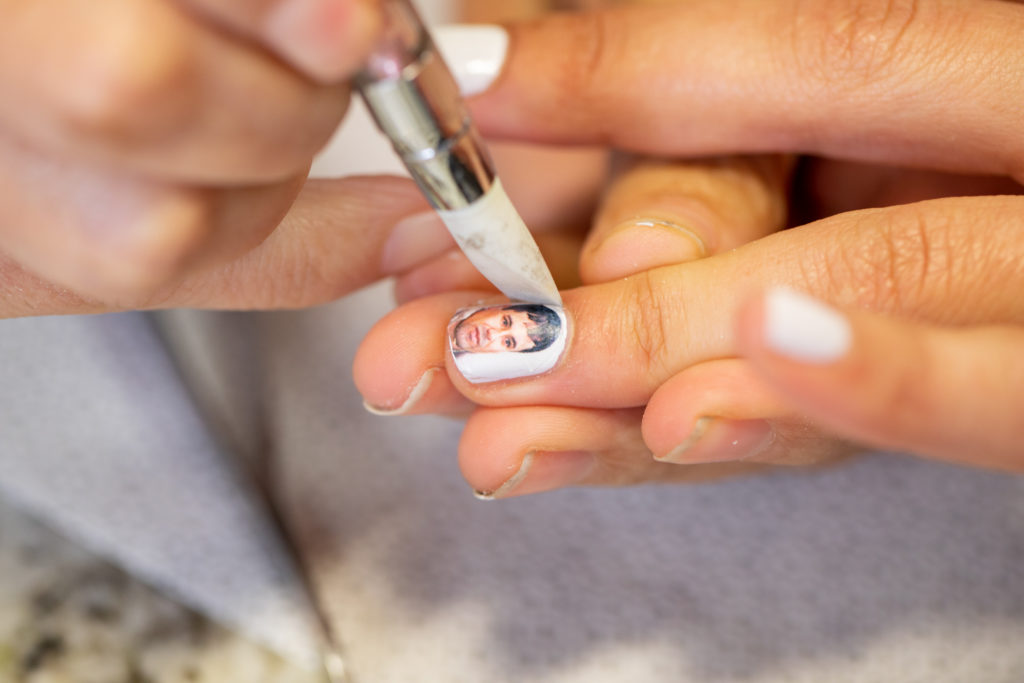
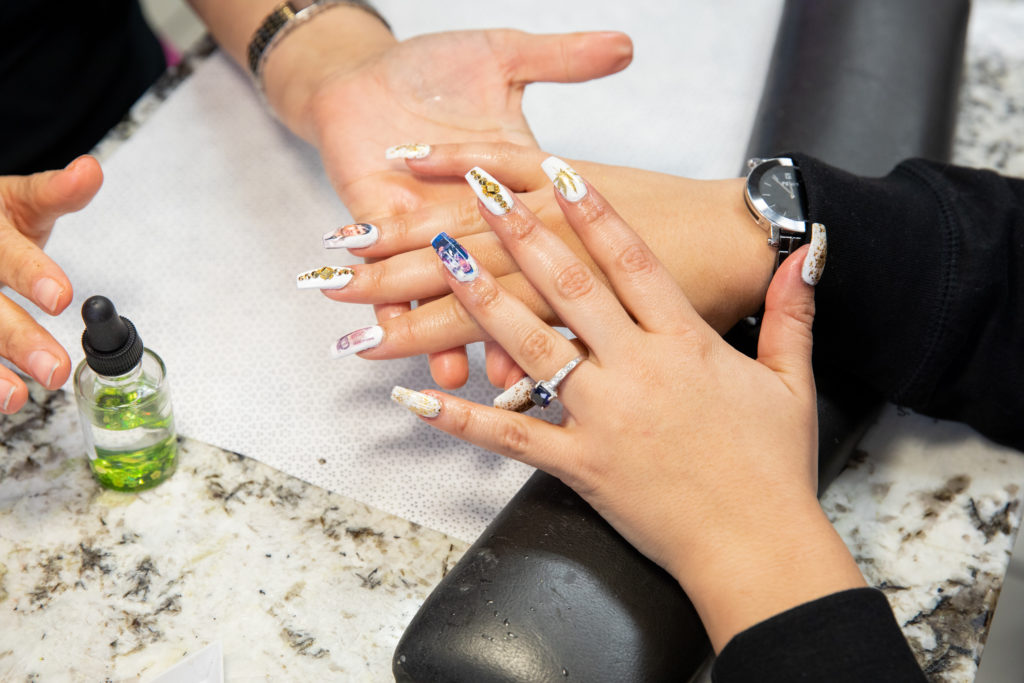
Thanks to social media platforms like Instagram, Chapo Nails quickly became a beauty trend.
“Many people have asked me for the nails from all over the world — from Colombia, Sinaloa, El Salvador,” Almeraz says. “There is not a place where Chapo Nails have not been ordered.”
Chapo Nails typically feature an image of Guzmán accompanied by jewels, stickers of pesos or U.S. dollars and miniature metal decals like handcuffs, crucifixes, handguns or marijuana. A full nail set can run anywhere from $38-$200 depending on the amount of bling stacked on.
“I’m going to make some nails where I’m going to encapsulate his photo. You’re going to see that on my nails he will never escape.”
Ofelia Almeraz, owner of Alexia’s Nails and Spa
After Almeraz finishes with her client, it’s my turn to receive the Chapo nail treatment. I’m nervous. I rarely get my nails painted, much less adorned with images of a deadly drug dealer called the “Osama bin Laden of the drug trade” by some Mexican officials. But
After applying a layer of white nail polish, Almeraz expertly places Swarovski crystals, the trademark of Sinaloa-style nails, along the cuticle edges of my nails. The jewels are reminiscent of the extravagant diamond-encrusted pistol bearing El Chapo’s initials that was displayed during his federal trial.
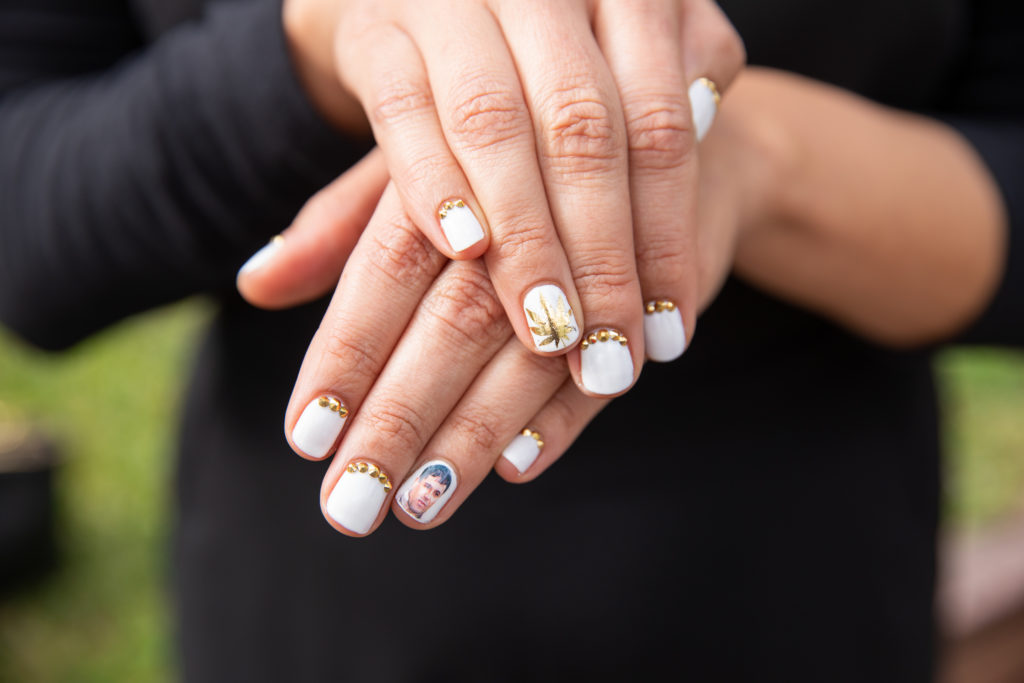
Since she started doing Chapo Nails, Almeraz says she gets at least five to six customers a week that come in for the specialty service. She describes the women who opt for Chapo Nails as buchonas, which is Mexican slang for “a strikingly good-looking woman who tends to be the girlfriend/love interest of a gangster,” according to Urban Dictionary.
“About 95 percent of the time my clients come here telling me that their boyfriend wants them to put Chapo on their nails,” she says as she reaches for white nail polish. “It is almost always the men who pay for these designs.”
She gently slides a decal with the image of El Chapo on my left ring finger and a gold marijuana leaf to my right and secures it with a nail smoothing pen.
“You’re a buchona now,” Almeraz says to me, smiling.
“The nails are cute!” exclaims Ana Guajardo, the owner of Cha Cha Covers, an East Los Angeles-based business that creates water slide decals. She provides the El Chapo images to Almeraz’s salon and many others across the globe.
“Many people have asked me for the nails from all over the world — from Colombia, Sinaloa, El Salvador. There is not a place where Chapo Nails have not been ordered.”
Ofelia Almeraz, owner of Alexia’s Nails and Spa
Guajardo, an art history major, began her business after watching YouTube videos about nail art with her then five-year-old daughter, Fatima.
“I just had a light bulb go off in my head,” she says while sipping coffee in a Highland Park cafe. “What if I could do this with the Virgen de Guadalupe or Frida Kahlo? I mean nobody was doing that. It did not exist.”
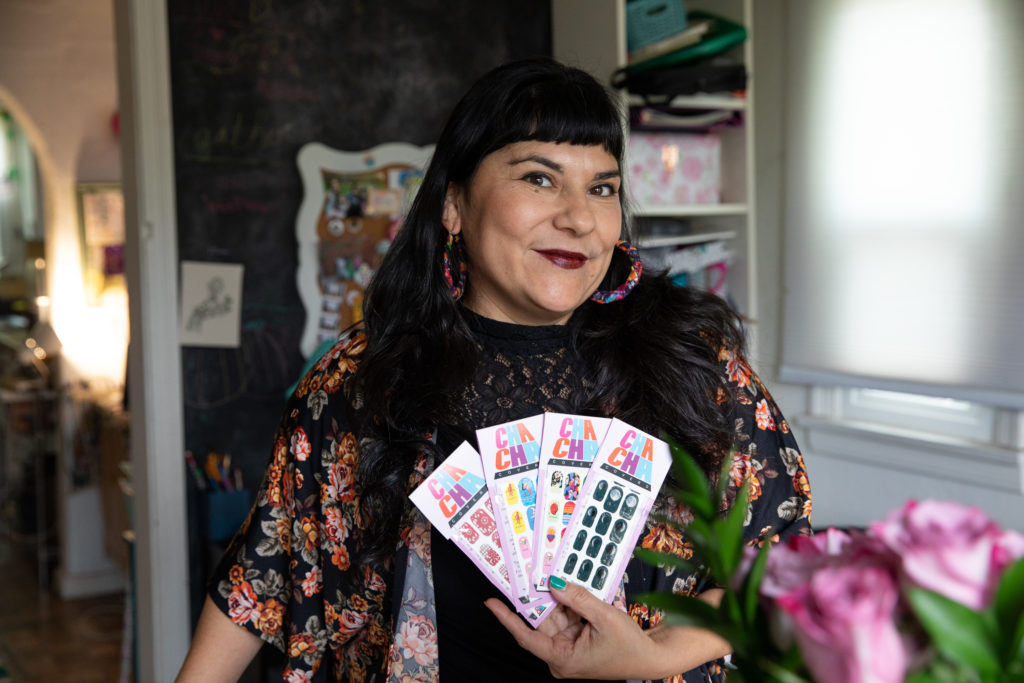
After several attempts to master the decal manufacturing process, Guajardo launched her Etsy store in 2012. She says the business — whose name refers to Latinas that like to get glammed up — is a way for her to walk “the hallways of my brain” and put out products that reflect her culture and generation.
Her website includes an eclectic mix of decals ranging from Mexican iconography to pop culture figures like Notorious B.I.G. and The Golden Girls.
“I don’t come into my business from a beauty angle,” Guajardo says. “I come into this from an affirmation angle. I just have a lot of pride culturally.”
Guajardo says this all started when El Paso-based Mexican rapper Ms. Krazie, known as @HelloLoca on Instagram, asked her to make a custom order of El Chapo stickers. After the rapper shared
“People just love outlaw culture,” she says.
“I don’t come into my business from a beauty angle. I come into this from an affirmation angle. I just have a lot of pride culturally.”
Ana Guajardo, owner of Cha Cha Covers
Having the face of a notorious drug dealer surrounded by gold crystals on your fingers definitely draws attention. My coworker, surprised by the new embellishments to my otherwise bare nails incredulously asked, “Who are you?” after getting a look at my hands. Later that night at Trader Joe’s, the cashier remarks on my nails while scanning a block of manchego cheese. “Those are badass,” she says, while a bagger from another aisle runs over to snap a photo of the manicure on her cell phone.
But the reaction I’m most surprised by is that of my dad — a 23-year veteran of the LAPD who worked as an undercover narcotics officer in the department’s Administrative Narcotics Division in the mid-1970s, just as America’s war on drugs in Mexico began to escalate.
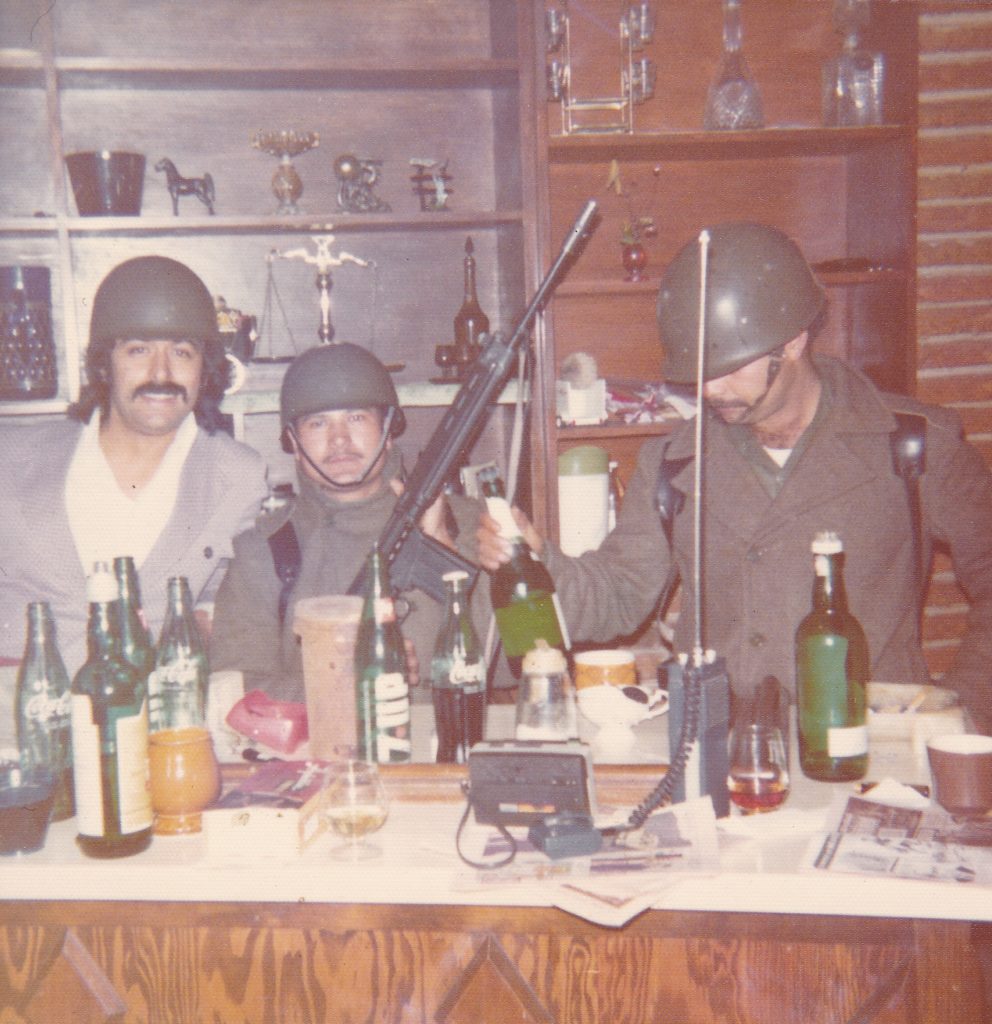
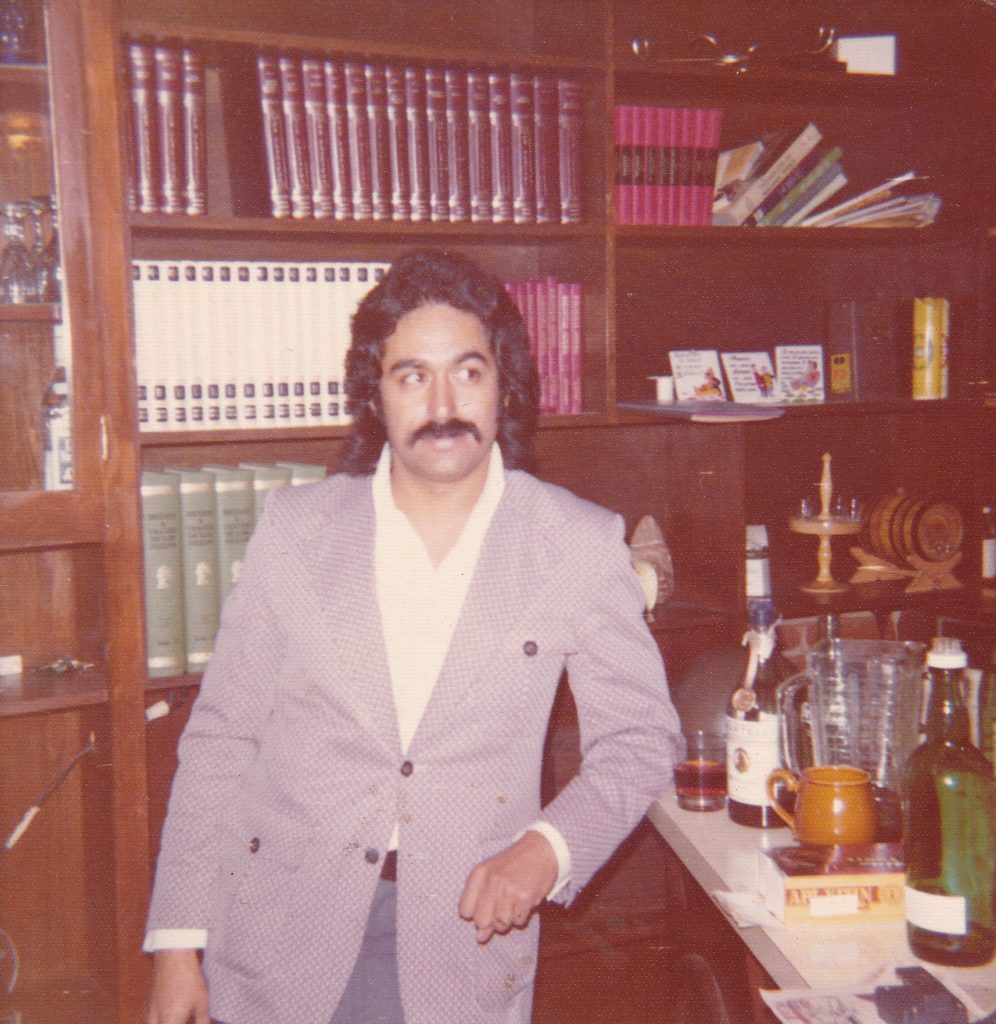
I hesitantly unveil my new manicure, half expecting him to send me to my room without dinner once he sees the shimmering marijuana leaf on my right hand. “These look good,” he chuckles, as he examines my nails over the marbled kitchen counter of my parents’ San Gabriel Valley home. I’m shocked by his reaction. My dad, the consummate drug warrior who spent years dedicated to taking people like El Chapo off the streets — the overprotective father who used to lecture me about the dangers of drugs and to “stay away from that dope” — was now complimenting my drug dealer nail art, relegating the myth of the dangerous El Chapo to a mere novelty.
“They’re a little gaudy, but that’s the style,” he says with a shrug.
Like many Americans, my dad remains fascinated by narco culture. He regularly watches the hit Netflix show “Narcos” and telenovelas like “El Señor de los Cielos” and “La Reina del Sur.”
The nails bring back memories of a drug bust he participated in during his narcotics days. U.S. and Mexican law enforcement officials carried out multiple raids at stash houses in Tijuana connected to Raul Leon Aispuro, a drug dealer that at one time supplied “up to a quarter of the heroin on Los Angeles streets,” according to news reports at the time. When they entered one of the stash houses, my dad noticed that Aispuro kept a large lion skin rug on the floor as a centerpiece in the main room.
“I’d never seen anything like it,” my dad says. “I thought, ‘Man, this guy has everything.'”
For Almeraz, the conclusion of the El Chapo trial will just bring more demand for the popular manicure.
“There is still talk that maybe they will let him free, that all the charges will be removed,” she says.
Even after the guilty verdict, El Chapo could have a second chance at freedom with a new trial after a Vice News report revealed that multiple jurors violated judge’s orders by following media reports of the case during the trial.
“But even if Chapo is not [released], drug trafficking will continue,” Almeraz says. “Any Sinaloan will tell you that.”

